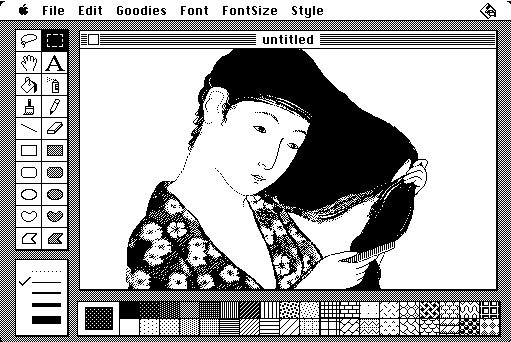Mental models.. we create these in our minds based on how we think things should work, they are a simulated understanding of external reality, a personalised understanding that you hold in your mind.
This interpretation allows you to make predictions, solve problems and figure out how to interact with the real world.
When we lose our understanding of the world around us, it can be a pretty scary place, so these mental models, if we create them for users as designers, shall help users to interact with devices or software in a familiar way.
A classic example of this is skeuomorphic design, which is where the design virtually represents what the actual working object looks like. Apple used to do this a lot, say MacPaint for example, there is a toolset that visually looks like real-life objects, pens, paintbrushes, erasers, scissors etc.
The advantage of the skeuomorphic style of design is that people already know what real-life objects do, so they already have a mental model of how the software works in their minds and thus they can jump straight into using the software confidentially.
It is crucial that a user interface offers a level of learnability and that it is, in fact, easy to learn to use what you design, your interface should be able to teach a user what will happen as they use it.
Matching your interface designs to the users’ mental model is a valuable way to design interfaces that are learnable by users.
To explain what your software or design does to users, it’s sometimes helpful to add analogies in order to give an existing mental model understanding a new meaning, one that is comparable to your design.
We do this all the time with films, for example, using two well-known films mixed together as an analogy for what the new film someone has not yet seen is going to be like, star wars meets the big Lebowski.. painted a mental picture right?!
